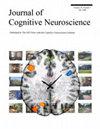Understanding Cortical Streams from a Computational Perspective
IF 3.1
3区 医学
Q2 NEUROSCIENCES
引用次数: 0
Abstract
The two visual cortical streams hypothesis, which suggests object properties (what) are processed separately from spatial properties (where), has a longstanding history, and much evidence has accumulated to support its conjectures. Nevertheless, in the last few decades, conflicting evidence has mounted that demands some explanation and modification. For example, existence of (1) shape activities (fMRI) or shape selectivities (physiology) in dorsal stream, similar to ventral stream; likewise, spatial activations (fMRI) or spatial selectivities (physiology) in ventral stream, similar to dorsal stream; (2) multiple segregated subpathways within a stream. In addition, the idea of segregation of various aspects of multiple objects in a scene raises questions about how these properties of multiple objects are then properly re-associated or bound back together to accurately perceive, remember, or make decisions. We will briefly review the history of the two-stream hypothesis, discuss competing accounts that challenge current thinking, and propose ideas on why the brain has segregated pathways. We will present ideas based on our own data using artificial neural networks (1) to reveal encoding differences for what and where that arise in a two-pathway neural network, (2) to show how these encoding differences can clarify previous conflicting findings, and (3) to elucidate the computational advantages of segregated pathways. Furthermore, we will discuss whether neural networks need to have multiple subpathways for different visual attributes. We will also discuss the binding problem (how to correctly associate the different attributes of each object together when there are multiple objects each with multiple attributes in a scene) and possible solutions to the binding problem. Finally, we will briefly discuss problems and limitations with existing models and potential fruitful future directions.从计算角度理解大脑皮层流
双视觉皮层流假说认为物体属性(是什么)与空间属性(在哪里)是分开处理的,这一假说由来已久,并积累了许多证据来支持其猜想。然而,在过去的几十年中,相互矛盾的证据不断涌现,需要做出一些解释和修正。例如,在背侧流中存在(1)与腹侧流相似的形状活动(fMRI)或形状选择性(生理学);同样,在腹侧流中存在与背侧流相似的空间激活(fMRI)或空间选择性(生理学);(2)在一个流中存在多个分离的子通路。此外,将场景中多个物体的不同方面分离开来的想法也提出了一些问题,即如何将多个物体的这些属性正确地重新关联或绑定在一起,从而准确地感知、记忆或做出决策。我们将简要回顾 "双流 "假说的历史,讨论对当前观点提出质疑的其他观点,并就大脑为什么会有分离的通路提出想法。我们将根据自己使用人工神经网络的数据提出以下观点:(1) 揭示双通道神经网络中出现的编码差异,即 "什么 "和 "哪里 "的编码差异;(2) 说明这些编码差异如何能够澄清之前相互矛盾的研究结果;(3) 阐明分离式通路的计算优势。此外,我们还将讨论神经网络是否需要为不同的视觉属性设置多个子通路。我们还将讨论绑定问题(当一个场景中有多个物体,每个物体都有多个属性时,如何正确地将每个物体的不同属性联系在一起)以及绑定问题的可能解决方案。最后,我们将简要讨论现有模型存在的问题和局限性,以及未来可能的发展方向。
本文章由计算机程序翻译,如有差异,请以英文原文为准。
求助全文
约1分钟内获得全文
求助全文
来源期刊
CiteScore
5.30
自引率
3.10%
发文量
151
审稿时长
3-8 weeks
期刊介绍:
Journal of Cognitive Neuroscience investigates brain–behavior interaction and promotes lively interchange among the mind sciences.

 求助内容:
求助内容: 应助结果提醒方式:
应助结果提醒方式:


